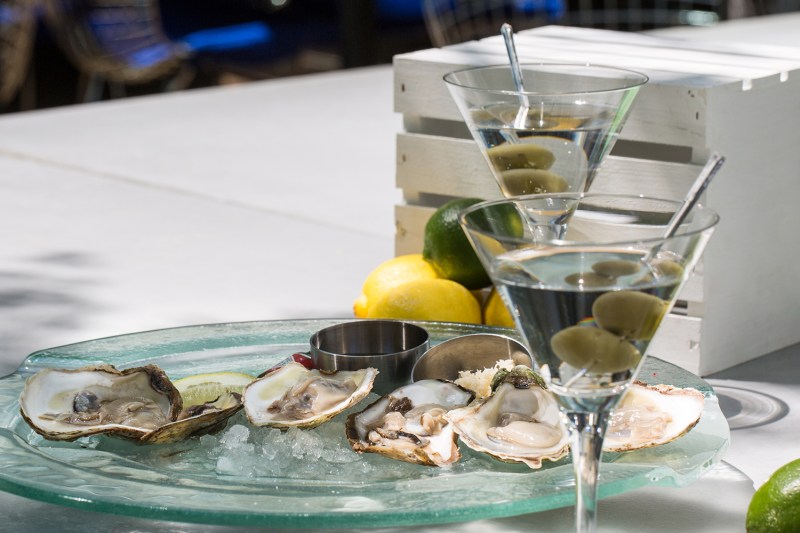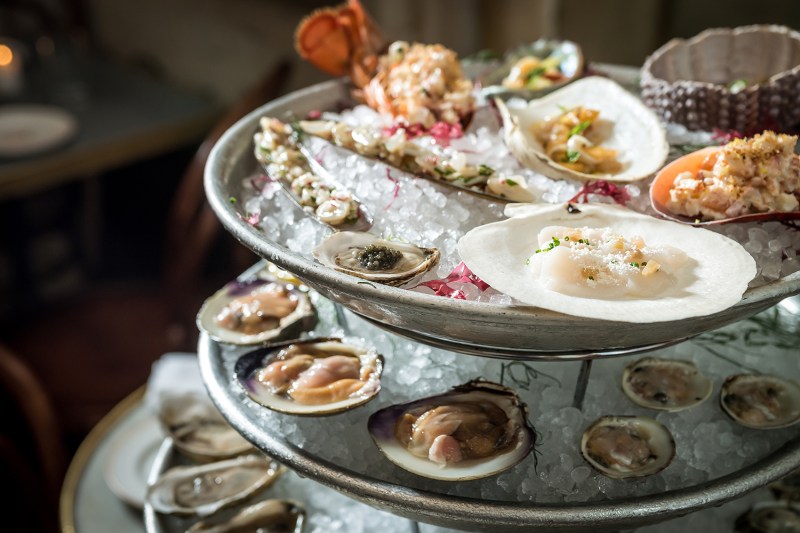
There aren’t many food and beverage pairings that are a better match than martinis and oysters. The stiff classic cocktail perfectly complements an oyster’s briny flavor and buttery texture, and they’re an ideal duo to prep your palate for a big meal. And while you really can’t go wrong when it comes to pairing your favorite martini with a plate of satisfying oysters, there are some basic guidelines to follow if you want both the drink and the bivalves to shine.
For some expert advice, we turned to Will Elliott, the bar director at Brooklyn’s Maison Premiere. As oysters are a specialty of the cocktail bar, he knows a thing or two about pairing them together. “Overall, I would recommend pairing rounder, softer martini styles with larger, more caloric oysters,” he says. “For sharper, drier Martini styles, I’d recommend oysters that are brinier from really cold water, usually East Coast or Canada oysters.”
Further Reading
You should also take the alcohol percentage of a martini’s ingredients into account when pairing oysters. “If you have a slightly lower ABV martini where you’re able to take longer sips, you want to pair it with a larger oyster,” Elliott says. “Likewise, if you have a slightly higher ABV Martini, you want to pair it with a smaller, more delicate oyster. It’s also important to take texture into account. When you’re drinking a sharper, drier Martini, you want something with a bit of crunch, a characteristic you’re more likely to find with East Coast or Canada oysters.”
If you’re looking for specifics, Elliott gave us oyster pairing suggestions for seven classic martini variations. The next time you’re craving the briny seafood with your favorite iteration of the cocktail, let these tips steer you in the right direction.
Glidden Point with a Martinez
The Martinez is the cocktail that started it all. Created in San Francisco during the gold rush of the mid-19th century, this classic calls for Old Tom Gin, sweet vermouth, and a splash of maraschino liqueur, making it sweeter than any other martini on this list. Elliott suggests pairing it with Glidden Point oysters from the cold waters of Maine. “Martinez-style martinis have a more significant mouthfeel because of the extra sugar content, and you want to pair them with an oyster that has a strong caloric quality to it,” he says. “You don’t want something really briny, but instead you want a larger oyster that will pair well with the orange, citrusy notes from the Martinez.”
Raspberry Point with a Classic Gin Martini
The gin martini is likely the drink that comes to mind when you think of a classic martini. Whether you like it garnished with an olive or a twist, this libation calls for crisp, salty oysters to whet your palate for another sip. Prince Edward Island’s Raspberry Point oysters are a perfect match. “For a classic gin martini, you want something crisp and from very cold water,” Elliott says. “The contrast of brine will be a good thing, so you want to match it with an East Coast oyster. There will be a lot of salinity upfront with a bit of texture to it and a big, fruity, bright finish.” In our opinion, this is the perfect combination to enjoy before a big meal.

Cape May Salt with a Vesper
“A Vesper is a milder and rounder martini, and you want to pair it with an equally well-rounded oyster,” Elliott says. Cape May Salt Oysters from New Jersey are a perfect match for the Bond-approved Vesper, which is made with gin, vodka, and Cocchi Americano. While most oysters from the Delaware Bay lack salinity, Cape May Salt oysters are grown in bags on the beach of the Bay’s southern end, which is closer to the Atlantic’s briny waters. They are plump with a creamy texture and perfect amount of brine, and they taste beautiful when you’re sipping on a balanced Vesper.
Suanshu Scott with a Gibson
The Gibson is making a comeback, and we couldn’t be more excited to see it available on cocktail menus across the country. A Gibson is essentially made with the same proportions of gin and dry vermouth that go into a classic martini, but instead of garnishing the drink with an olive or twist, it’s finished with brined cocktail onion. According to Elliott, the Gibson is best paired with Suanshu Scott oysters from Virginia. “These oysters give off a hint of savory notes and a bit of living, ocean flavor, and they’d be nicely punctuated by the sweet-sour onion flavor of a Gibson,” he says.
Olympia with a Dirty Martini
If you’re a fan of olives, the dirty martini was most likely your gateway into the world of martinis. The bitter saltiness from the olive brine makes for a deeply satisfying drink when done right, and it’s especially nice to pair with buttery West Coast Olympia oysters. “These small oysters are not very briny but instead have a mushroom or olive-like element,” Elliott says. “They offer a nice richness without being overly creamy, making them a great pairing for a classic dirty martini.”

Pemaquid with a 50/50 Martini
While a classic martini calls for about two ounces of gin and a half ounce of dry vermouth, the 50/50 martini is made with equal parts gin and vermouth, giving it a slightly sweeter taste and heavier texture. To properly enhance the 50/50 martini, Elliott suggests pairing it with Pemaquid oysters from Maine, which are planted in the marine clay at the bottom of the Damariscotta River. “These are medium-sized, slightly buttery oysters, which makes them the perfect pair for a 50/50 Martini,” he says. Their flavor is a pretty equal mix of butter and brine, so they won’t overwhelm either ingredient in a delicate 50/50 martini.
Chesapeake Gold with a Perfect Martini
More advanced martini drinkers are likely familiar with the Perfect version, which is made with two parts gin, one part dry vermouth, and one part sweet vermouth. If you find Martinis to be too dry or savory, this is an excellent version to order. And if you come across Chesapeake Gold oysters from Maryland, it’s an ideal martini to order alongside the bivalves. “These oysters offer a nice mixture of brine and sweetness, just like the Perfect martini,” Elliott says. “So they are not going to overshadow the cocktail with too much salinity.”



